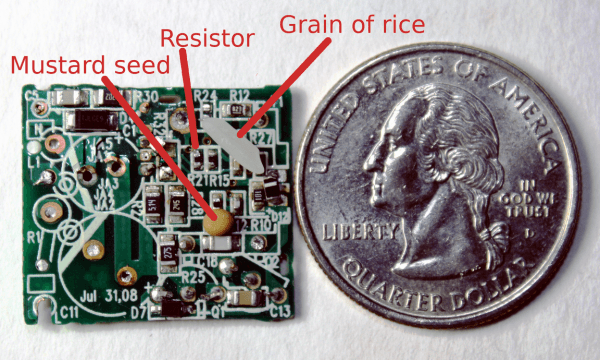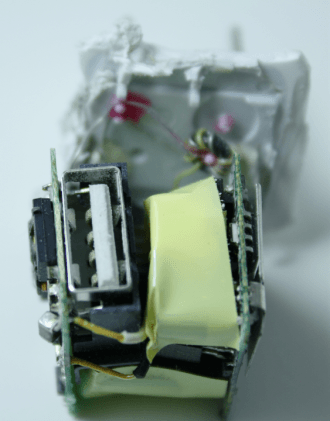While Apple is getting more competitive on system pricing, the company's accessories still seem wildly overpriced. For instance, the iOS USB power adapter costs $29, while generic units are readily available through Amazon for under as little as a dollar or two with free shipping. If you needed a new wall adapter for your iPhone, you'd undoubtedly consider evading the infamous "Apple tax." After all, a charger's a charger, right?
Wrong, according to electronics technician Ken Shirriff, who recently dissected Apple's charger alongside some cheaper alternatives. Shirriff's teardowns offer an incredible amount of detail – much of which is admittedly over our heads – but the important takeaway is clear enough: Apple's device is of a notably higher quality than off-brand components. This is true in many ways and cheaping out could have very real consequences.
Apple's charger has extra parts and/or design elements that reduce interference with the touchscreen and audio playback, in addition to improving safety. Shirriff said there are strict rules governing the separation of dangerous line voltage and safe output voltage. There's supposed to be 3-4mm of "creepage" and "clearance." Apple's charger exceeds that requirement at 6mm, while the off-brand device has less than 1mm.
"I wondered how this [knock-off] power supply could have met the UL standards," Shirriff said. "It didn't list any safety certifications, or even a manufacturer. I suddenly realized that purchasing the cheapest possible charger on eBay from an unknown manufacturer in China could actually be a safety hazard. Note that this sub-millimeter gap is all that's protecting you and your phone from potentially-lethal 340 volts," he warned.

Apple's adapter is also sturdier. In 2008, the company recalled iPhone chargers with a defect that caused the AC prongs to fall off in the wall outlet. This prompted a redesign that makes the prongs virtually impossible to remove from the charger without destroying it. By comparison, Shirriff used pliers to easily remove the no-name adapter's prongs, noting that they were only held in with friction, and seemingly little friction at that.
Despite the higher quality of Apple's charger, Shirriff acknowledged that its steep price is largely profit. He noted that a very similar Samsung cube charger uses about $1 less in components and retails for as little as $6. Although you'll sacrifice a little quality (more EMI interference and weaker, though perfectly safe prongs) Samsung's offering seems like a great compromise if you can't justify the full $30 for Apple's solution.
Charger component pricing per 1,000 units (Shirriff believes Apple gets even better rates)
- 0402 SMD resistor $0.002
- 0805 SMD capacitor $0.007
- SMD transistor $0.02
- fusible resistor $0.03
- 1A 600V (1J) diode $0.06
- thermistor $0.07
- Y capacitor $0.08
- 3.3uF 400V electrolytic capacitor $0.10
- TL431 $0.10
- 1.5uH inductor $0.12
- SCD 34 diode $0.13
- 2801 optocoupler $0.16
- 1HNK60 transistor $0.22
- USB jack $0.33
- 100uF tantalum capacitor $0.34
- L6565 IC $0.55
- 330uF tantalum polymer capacitor (Sanyo POSCAP) $0.98
- flyback transformer $1.36
- Estimated BOM: $4.66
